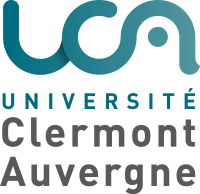Particles and Universe
The activities of the Particles and Universe pole tackle the fundamental questions concerning the structure of matter on the subatomic and cosmological scales from an experimental perspective.
At the subatomic scale, the laboratory participates in three of the four experiments at the CERN LHC:
- ATLAS: studies of Higgs boson couplings, top quark physics, the search for new exotic particles and the use of artificial intelligence tools dedicated to the discovery of new physics,
- ALICE: characterization of the quark-gluon plasma via heavy flavors, quarkonia, electroweak bosons and jets,
- LHCb: precision tests of the Standard Model and flavor physics via radiative decays and uncharmed hadronic decays.
These groups were formed in the 80s and 90s and, together with the laboratory’s technical divisions, have contributed to all stages (design, construction, installation, commissioning, operation and maintenance) of several detection systems, as well as their upgrades for the next phases of data acquisition. They are also involved in the long-term future of particle physics in Europe, notably through the FCC project at CERN.
Another groups is working on the COMET experiment at J-PARC (Japan), which aims to demonstrate lepton flavour violation through the neutrinoless conversion of muons bound in muonic atoms into electrons. The detection of such an effect would constitute an irrefutable signal of physics beyond the Standard Model, paving the way to new perspectives on the fundamental nature of elementary interactions.
Finally, a group is involved in the CKMFitter collaboration: global fit of the electroweak sector with data from flavor physics in the context of the Standard Model and beyond.
At the cosmological scale, activities focus on
- The study of type Ia supernovae (SNe Ia) via optimization of the LSST-DESC observation strategy,
- the anisotropy of cosmic expansion and SNe Ia/cosmic void correlations in ZTF,
- the analysis and calibration of telescope images in ZTF and LSST,
- the study of the transient sky with the Fink broker,
- anomaly detection in cosmological surveys,
- the development of algorithms associated with artificial intelligence and
- the deployment of databases.
These activities are spread in two teams, one focussed on LSST and ZTF, and the other one on Fink and Artificial Intelligence.
The Pole is made up of around thirty researchers and professor-researchers, post-docs and PhD students, with many of the latter working under joint supervision with foreign institutes. It regularly welcomes master’s students and interns.



